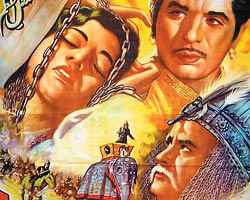With the French film, The Artist, winning the maximum number of Oscars, the importance of black and white cinema has once again come into limelight.

The BAFTA announcement has created a flutter in Bollywood over whether certain films should be shot in the monochrome medium again. After all, black and white films have a certain uniqueness which is yet to be equalled.
Surveying the issue, Manoj Kumar says, “The best films in Hindi which have stood the test of time are in black and white. The social impact of Awara, the lyricism and pathos of Devdas and the poignancy of Do Aankhen Barah Haath would have never haunted viewers even today, if they were not conceived and shot in black and white.”
True, the essence of black and white cinema has a charm of its own. Reality, lyrical values and human emotions have appeared far more convincing in the black and white tones of cinema. Supporting Manoj Kumar’s view, Yash Chopra states, “I will never imagine shooting a critical film like Dharamputra in colour. The pragmatism of the theme would get lost then.”
In the 50s and 60s, shooting in black and white was much less expensive compared to colour. Now the situation is diametrically opposite. Says Soumendu Ray, who shot all Ray classics after Nayak, “When I watch the Apu Trilogy, Devi or Charulata, I still marvel at the highly imaginative work by my predecessor Subrata Mitra. He used the first ever bounce lighting in Pather Panchali and the freeze shot in Charulata, creating effects that were earlier unknown to Indian cinema. They were in black and white.”
The cinematic works of Fardoon Irani, Jal Mistry, Radhu Karmakar and V K Murthy were magic created in black and white through shadows, light and shade, montages and other forms of imaginative cinematography. Acknowledges Madhur Bhandarkar, “All of my films are in colour.
The present era belongs to colour and a lot of advancement has come in the form of technology. Yet, whenever I view Andaz, Pyasa or Aakhri Khat, I marvel at the usage of black and white in those films. There are some films in the 50s and 60s which will never appear as haunting and charming in colour as they did in black and white.”
Yet, Bollywood is the only film factory where black and white classics are being redone in colour. But these efforts have failed. Mughal-E-Azam, Naya Daur and Hum Dono did not hit the bull’s eye when released in colour. Viewers could never identify with the coloured versions. Now, Dharmendra and Sanjay Khan, who acted in the war epic Hakeekat are themselves skeptical about the film’s coloured version which will release this May.
Says Subhash Ghai, “Nowhere in the world are vintage classics coloured and released again. I will never want to watch a Madhumati or Yahudi in colour. Of course, if the theme demands, I will opt for a black and white portrayal of a movie and give it the required realistic effect.”